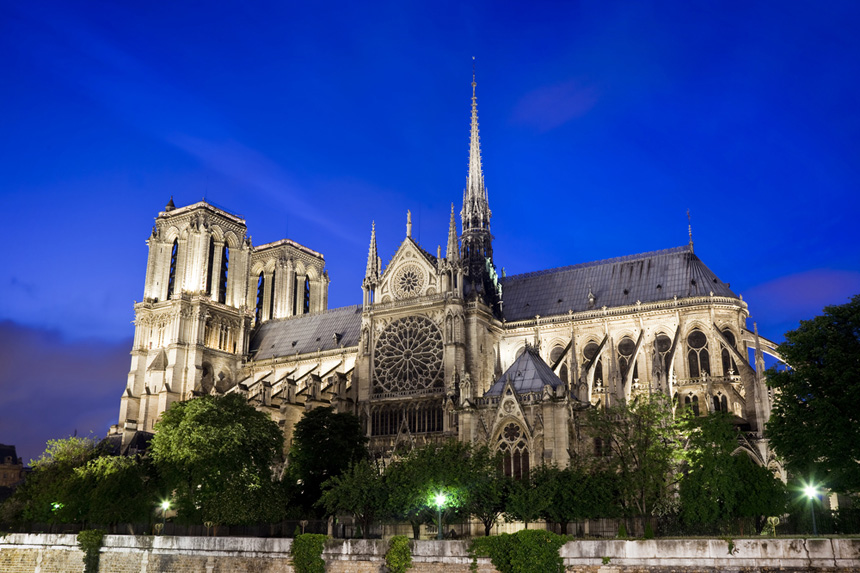Managing editor and logophile Andy Hollandbeck reveals the sometimes surprising roots of common English words and phrases. Remember: Etymology tells us where a word comes from, but not what it means today.
The horrific fire that damaged the Notre Dame Cathedral in Paris this week has left a lot of us thinking about cathedrals. While many associate these churches with the flying buttresses, towering spires, and gaping gargoyles that make Notre Dame a lasting artistic achievement, what actually makes a cathedral a cathedral is organizational, not architectural.
In the Roman Catholic Church, a cathedral is the seat of a diocese, from which a bishop presides over his parishioners. That’s that same type of “seat” that appears in the phrase county seat, the governmental center of a county — though a Catholic diocese often encompasses multiple counties. You might think of a cathedral, then, as being roughly analogous to a county courthouse.
Like courthouses, cathedrals can incorporate all sorts of architectural styles. At one end, you have the intricate stonework of a Notre Dame Cathedral that rises above the surrounding landscape. At the other end, you have, for example, the cathedral for the diocese of Gaylord, Michigan: St. Mary, Our Lady of Mount Carmel. This low-slung building with an orange roof resembles more the utilitarian style of a modern elementary school than the grandeur of Rome.

Just to look at them, Notre Dame and Our Lady of Mount Carmel have little in common. But they’re both cathedrals because they are both the seat of the diocesan bishop — a concept embedded in the word cathedral itself.
Centuries ago, the Greek kathedra entered Latin as cathedra; both words mean “chair” or “seat.” (The word chair is also derived from cathedra.) As the Roman Catholic Church organized, it used cathedra to refer specifically to a bishop’s seat, both physically and organizationally. It still does.
Cathedral entered English as an adjective, not a noun. Until sometime in the 16th century, Notre Dame would have been referred to as a cathedral church, a translation of the Latin ecclesia cathedralis “church of the bishop’s seat.” But gradually, English speakers dropped the church.
Cathedral became so well established as a noun that, according to Etymonline, some writers have attempted to reengineer new adjectival forms, including cathedraical, cathedratic, and cathedratical. The words failed to catch on, though, and to this day, cathedral appears as both a noun and an adjective.
However, because people have long associated the word cathedral with immense, awe-inspiring architecture, it has found a new home in metaphorical use, as when one reporter referred to Minneapolis’s newly built U.S. Bank Stadium (home of Super Bowl LII) as an “NFL Cathedral,” implying not only the building’s size and style but also the almost religious fervor of some Vikings fans.
Featured image: Shutterstock
Become a Saturday Evening Post member and enjoy unlimited access. Subscribe now



